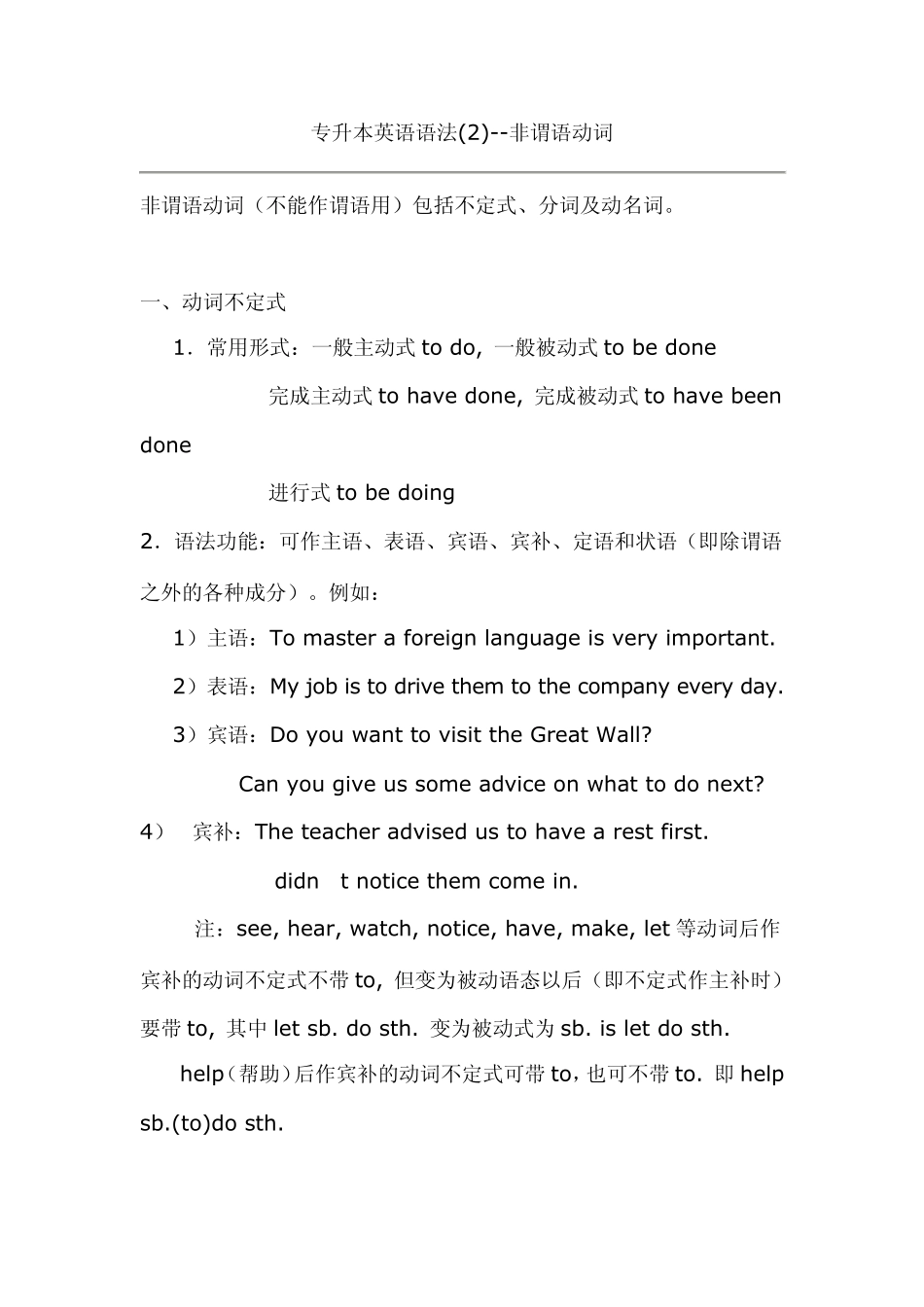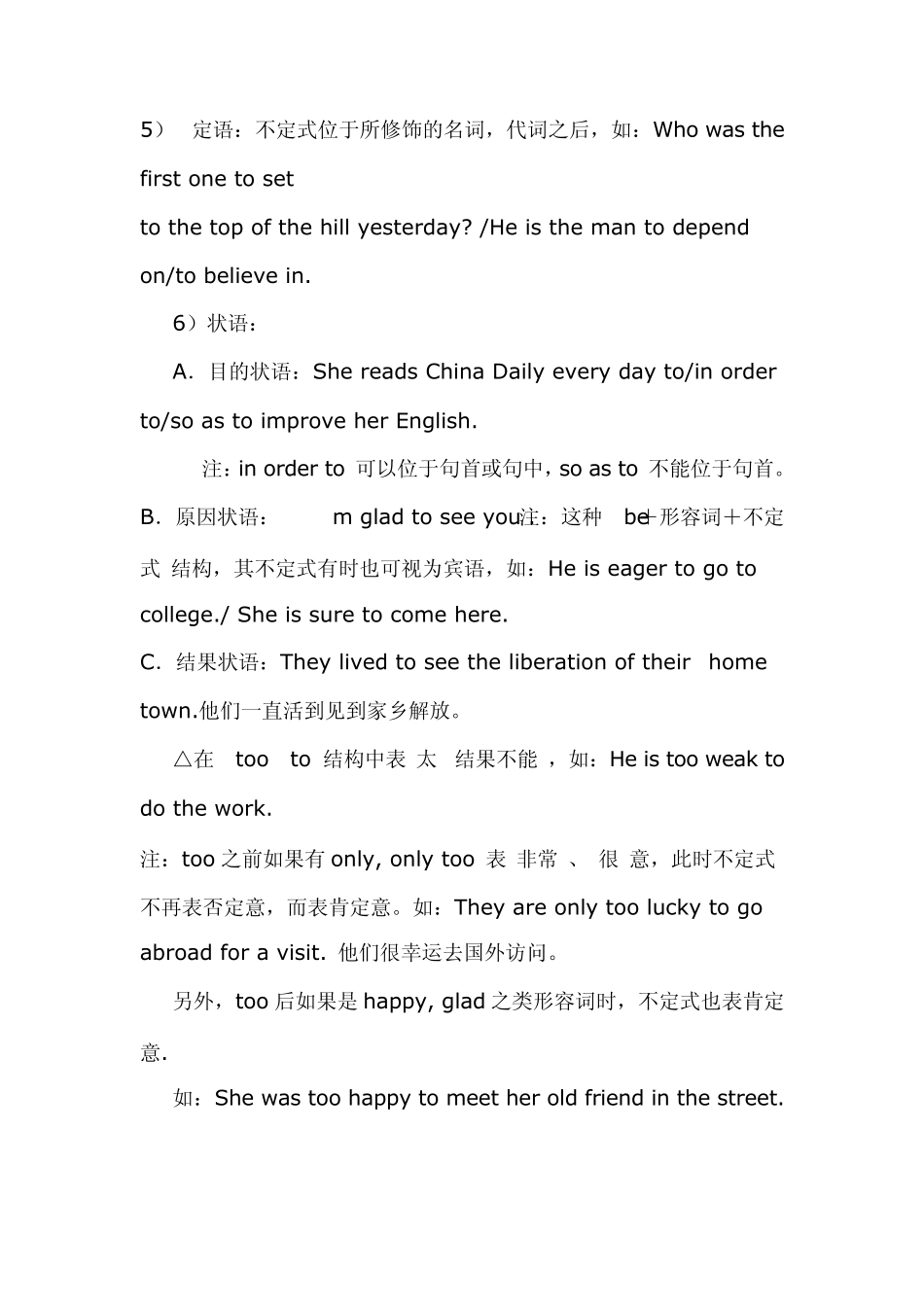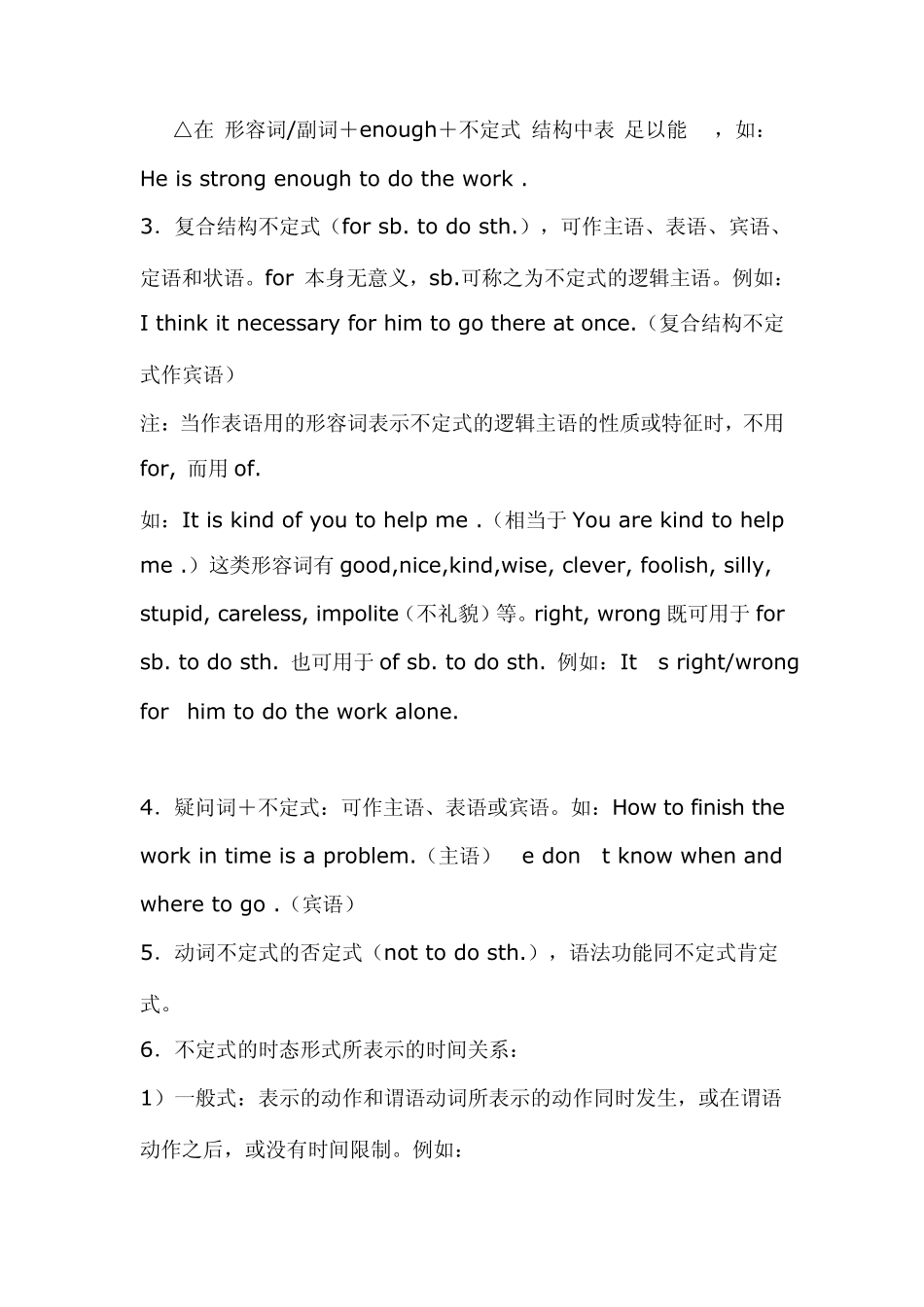专升本英语语法(2)--非谓语动词 非谓语动词(不能作谓语用)包括不定式、分词及动名词。 一、动词不定式 1.常用形式:一般主动式to do, 一般被动式to be done 完成主动式to have done, 完成被动式to have been done 进行式to be doing 2.语法功能:可作主语、表语、宾语、宾补、定语和状语(即除谓语之外的各种成分)。例如: 1)主语:To master a foreign language is very important. 2)表语:My job is to drive them to the company every day. 3)宾语:Do you want to visit the Great Wall? Can you give us some advice on what to do next? 4) 宾补:The teacher advised us to have a rest first. I didn’t notice them come in. 注:see, hear, watch, notice, have, make, let 等动词后作宾补的动词不定式不带 to, 但变为被动语态以后(即不定式作主补时)要带 to, 其中 let sb. do sth. 变为被动式为 sb. is let do sth. help(帮助)后作宾补的动词不定式可带 to,也可不带 to. 即 help sb.(to)do sth. 5) 定语:不定式位于所修饰的名词,代词之后,如:Who was the first one to set to the top of the hill yesterday? /He is the man to depend on/to believe in. 6)状语: A.目的状语:She reads China Daily every day to/in order to/so as to improve her English. 注:in order to 可以位于句首或句中,so as to 不能位于句首。 B.原因状语: I’m glad to see you . 注:这种“be+形容词+不定式”结构,其不定式有时也可视为宾语,如:He is eager to go to college./ She is sure to come here. C.结果状语:They lived to see the liberation of their home town.他们一直活到见到家乡解放。 △在“too…to…”结构中表“太…结果不能”,如:He is too weak to do the work. 注:too 之前如果有only, only too 表“非常”、“很”意,此时不定式不再表否定意,而表肯定意。如:They are only too lucky to go abroad for a visit. 他们很幸运去国外访问。 另外,too 后如果是 happy, glad 之类形容词时,不定式也表肯定意. 如:She was too happy to meet her old friend in...


